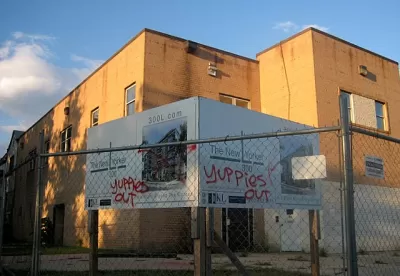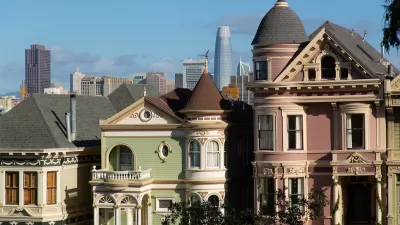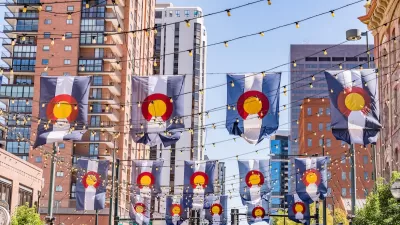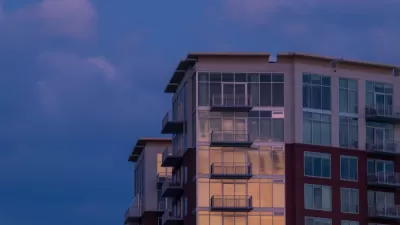The general principle is simple: more density equals lower prices and less environmental impact. But suburbia's imprint is deep, both on cities themselves and on how we expect to inhabit them.

In an article on Grist, Ben Adler doubts whether the urbanist trend will be enough to combat the ills of low density. Although urban populations are rising, "We're watching the demographics of cities change without getting the carbon-emissions-reducing benefits that the back-to-the-cities movement promised."
After decades of what we now consider underdevelopment, cities face chronic housing shortages. "Given that it's the capital of a country with twice as many people as in 1950, you wouldn't expect Washington to have shrunk, would you? Well, it has, and it hasn't fully bounced back."
And even though developers are steadily adding units, social factors stemming from the suburban boom are getting in the way. "D.C. doesn't suffer from a shrinking stock of housing. In fact, it has the most dwelling units in its history — it just has fewer people in each home [...] Middle-class Americans have simply become accustomed to more private space and comfort than previous generations."
Adler traces part of the problem to the racial and spacial vagaries of urban infilling. "In certain neighborhoods that have become trendy, high demand bids up housing prices, empty lots get filled in, and the population grows. In other neighborhoods, demand remains low and abandonment continues." Environmentalists (and some urbanists) want to fill in these empty spaces, only to confront inevitable gentrification and displacement as prices rise.
FULL STORY: Thanks to social change, urban density ain’t what it used to be

Study: Maui’s Plan to Convert Vacation Rentals to Long-Term Housing Could Cause Nearly $1 Billion Economic Loss
The plan would reduce visitor accommodation by 25,% resulting in 1,900 jobs lost.

North Texas Transit Leaders Tout Benefits of TOD for Growing Region
At a summit focused on transit-oriented development, policymakers discussed how North Texas’ expanded light rail system can serve as a tool for economic growth.

Using Old Oil and Gas Wells for Green Energy Storage
Penn State researchers have found that repurposing abandoned oil and gas wells for geothermal-assisted compressed-air energy storage can boost efficiency, reduce environmental risks, and support clean energy and job transitions.

Private Donations Propel Early Restoration of Palisades Playground
Los Angeles has secured over $1.3 million in private funding to restore the Pacific Palisades playground months ahead of schedule, creating a modern, accessible space that supports community healing after recent wildfires.

From Blight to Benefit: Early Results From California’s Equitable Cleanup Program
The Equitable Community Revitalization Grant (ECRG) program is reshaping brownfield redevelopment by prioritizing projects in low-income and environmental justice communities, emphasizing equity, transparency, and community benefits.

Planting Relief: Tackling Las Vegas Heat One Tree at a Time
Nevada Plants, a Las Vegas-based nonprofit, is combating the city’s extreme urban heat by giving away trees to residents in underserved neighborhoods, promoting shade, sustainability, and community health.
Urban Design for Planners 1: Software Tools
This six-course series explores essential urban design concepts using open source software and equips planners with the tools they need to participate fully in the urban design process.
Planning for Universal Design
Learn the tools for implementing Universal Design in planning regulations.
Ascent Environmental
Borough of Carlisle
Institute for Housing and Urban Development Studies (IHS)
City of Grandview
Harvard GSD Executive Education
Toledo-Lucas County Plan Commissions
Salt Lake City
NYU Wagner Graduate School of Public Service





























